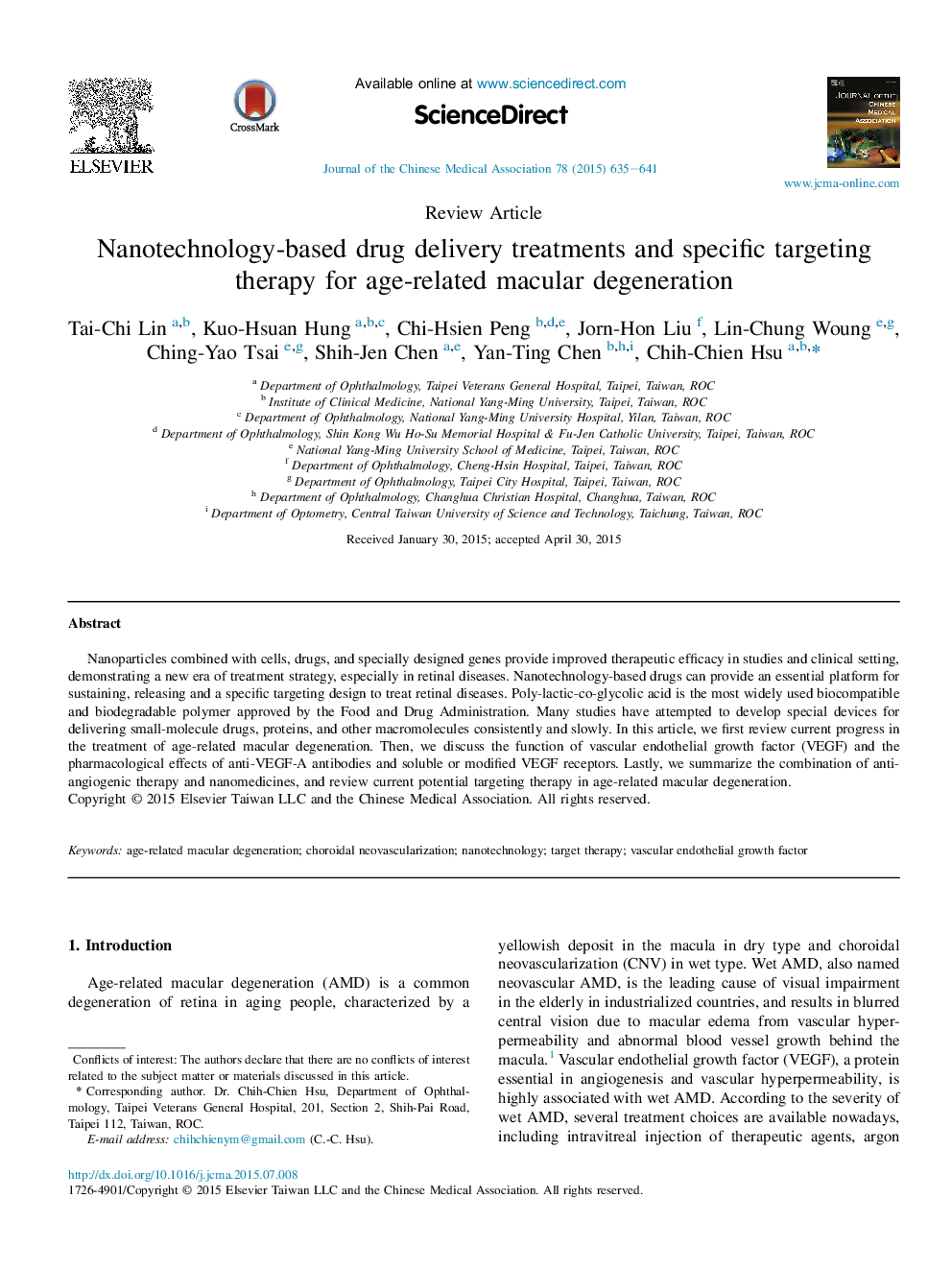| کد مقاله | کد نشریه | سال انتشار | مقاله انگلیسی | نسخه تمام متن |
|---|---|---|---|---|
| 6151862 | 1233230 | 2015 | 7 صفحه PDF | دانلود رایگان |
Nanoparticles combined with cells, drugs, and specially designed genes provide improved therapeutic efficacy in studies and clinical setting, demonstrating a new era of treatment strategy, especially in retinal diseases. Nanotechnology-based drugs can provide an essential platform for sustaining, releasing and a specific targeting design to treat retinal diseases. Poly-lactic-co-glycolic acid is the most widely used biocompatible and biodegradable polymer approved by the Food and Drug Administration. Many studies have attempted to develop special devices for delivering small-molecule drugs, proteins, and other macromolecules consistently and slowly. In this article, we first review current progress in the treatment of age-related macular degeneration. Then, we discuss the function of vascular endothelial growth factor (VEGF) and the pharmacological effects of anti-VEGF-A antibodies and soluble or modified VEGF receptors. Lastly, we summarize the combination of antiangiogenic therapy and nanomedicines, and review current potential targeting therapy in age-related macular degeneration.
Journal: Journal of the Chinese Medical Association - Volume 78, Issue 11, November 2015, Pages 635-641
